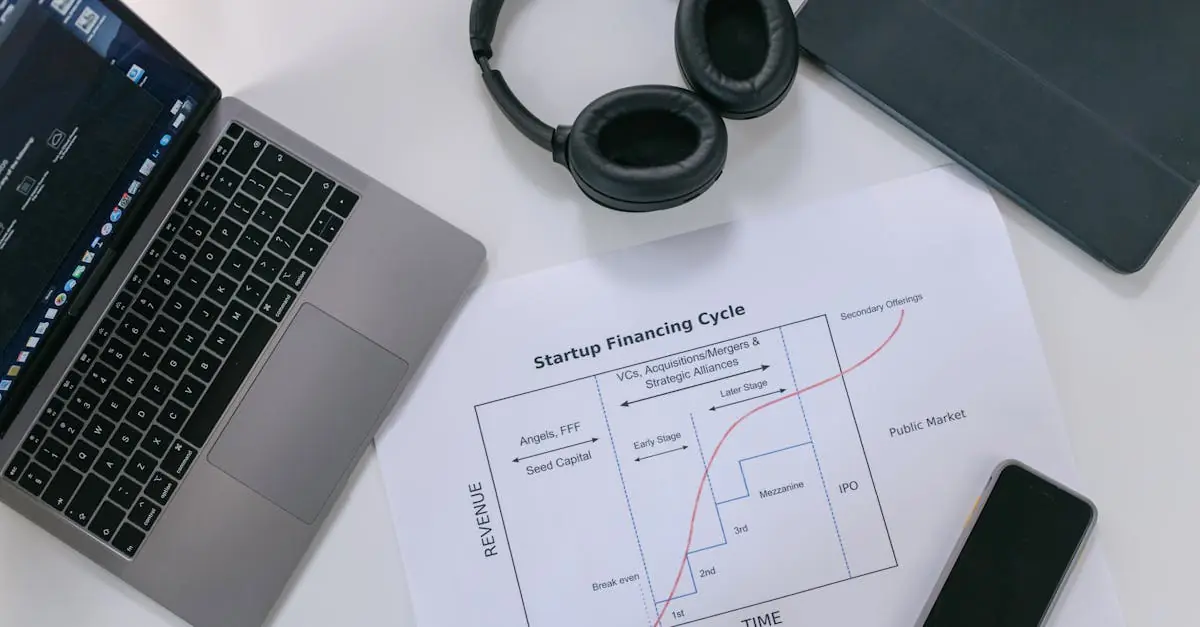In a world where coding can feel like deciphering ancient hieroglyphics, no-code surveys are the superhero we didn’t know we needed. They swoop in, saving the day for marketers, researchers, and anyone else who wants to gather insights without battling complex programming languages. With just a few clicks, anyone can create engaging surveys that don’t require a PhD in computer science.
Table of Contents
ToggleOverview of No-Code Surveys
No-code surveys simplify the process of gathering data, making them essential for businesses and organizations. Users design customized questionnaires quickly and intuitively. These platforms often feature drag-and-drop interfaces, which eliminate the need for programming knowledge.
They offer various question types, such as multiple-choice, rating scales, and open-text fields, enhancing user engagement. Each tool enables instant preview options, allowing users to visualize surveys before deployment. Many no-code survey tools integrate with existing systems, streamlining data collection and analysis.
Data collected from no-code surveys can provide valuable insights into customer preferences and behaviors. Respondents find these surveys straightforward, which typically results in higher completion rates. An increase in response rates significantly boosts the quality of insights gained.
Popular no-code survey tools include platforms like Typeform, Google Forms, and SurveyMonkey. Each offers unique features tailored to different needs, from simple surveys to complex research projects. Organizations use these tools for multiple purposes including market research, customer feedback, and event registrations.
No-code surveys also allow for easy collaboration among team members. Stakeholders can contribute to survey design and review results within the same platform. By promoting teamwork, these tools enhance efficiency and expedite decision-making processes.
The accessibility of no-code surveys empowers users from diverse backgrounds. It democratizes data collection and enables individuals without technical expertise to gather essential information, driving better business outcomes.
Benefits of No-Code Surveys
No-code surveys offer various advantages, making them a vital resource for many organizations. Their user-friendly nature simplifies the survey creation process for team members across different departments.
Ease of Use
Creating surveys becomes straightforward with drag-and-drop interfaces that eliminate complexities. Users can easily select question types, adjust layouts, and preview their surveys instantly. Many tools also provide templates that cater to different survey needs, ensuring a faster setup. Completing a survey can take as little as 10 minutes, maximizing efficiency for busy professionals. An intuitive design minimizes the learning curve, allowing anyone to create effective surveys without prior experience.
Accessibility for Non-Technical Users
Non-technical users can engage with no-code surveys without facing obstacles. Users from various backgrounds can design and distribute surveys, as familiarity with coding isn’t required. This democratization encourages diverse perspectives in data collection while empowering teams. With features such as collaboration and feedback mechanisms, team members contribute effectively, enhancing survey quality. Many organizations find that involving non-technical staff leads to richer insights and ensures that surveys resonate with target audiences.
Key Features of No-Code Survey Tools
No-code survey tools offer essential features that empower users to create effective surveys without programming knowledge. These features include customization and integration options that significantly enhance their functionality.
Customization Options
Customization options provide users with the ability to tailor survey designs to their specific needs. Users can adjust fonts, colors, and layouts to match branding or thematic requirements. A variety of question types, such as multiple choice, open-ended, and scale questions, allows for diverse data collection. Preview functionality ensures that users see the design as respondents will, enabling adjustments before launching. Some platforms even offer advanced logic features that personalize surveys based on previous answers, which enhances engagement and improves data quality.
Integration Capabilities
Integration capabilities allow no-code survey tools to connect seamlessly with other software systems. Most platforms support connections with popular applications like Google Sheets, CRM systems, and email marketing tools. This connectivity streamlines data collection by automatically syncing responses with existing databases. Users benefit from quick analysis since data flows directly into analytics software, enhancing real-time insights. Connecting surveys with project management tools also fosters collaboration among team members, making it easier to manage survey projects effectively.
Popular No-Code Survey Platforms
Numerous no-code survey platforms stand out in the market today. These tools simplify the survey creation process while offering unique features to cater to diverse user needs.
Overview of Leading Platforms
Typeform excels in creating visually appealing surveys and offers an engaging user experience. Google Forms provides a straightforward interface, making it ideal for quick questionnaire setups. SurveyMonkey stands out for its extensive question types and robust analytics capabilities. Jotform integrates advanced customization features, allowing users to create complex forms effortlessly. Additionally, Microsoft Forms integrates seamlessly with Office 365, making it easy for users within that ecosystem to gather data efficiently.
Comparison of Features and Pricing
Typeform’s pricing starts at $35 per month, offering features like logic jumps and integrations, which enhance survey interactivity. Google Forms remains free, providing essential features without advanced functionalities. SurveyMonkey charges $39 per month for premium capabilities, including exporting data and advanced analytics. Jotform offers plans starting at $24 per month, which include numerous templates and customization options. Microsoft Forms is available for free with Office 365 subscriptions, ensuring easy access for users already utilizing Microsoft products.
Best Practices for Creating No-Code Surveys
Creating no-code surveys benefits from several best practices that enhance quality and effectiveness. Focusing on clarity and simplicity in survey design engages respondents better and improves response rates.
Designing Effective Questions
Effective questions form the backbone of any successful survey. Prioritize clarity by using straightforward language and avoiding jargon. Open-ended questions encourage detailed responses, while closed-ended questions simplify data analysis. Craft questions with a specific objective in mind to elicit meaningful insights. Utilize scales for measuring opinions, as they help gauge respondent sentiment accurately. Testing questions before deployment ensures they resonate with the target audience and work as intended.
Analyzing Survey Results
Analyzing survey results is crucial for deriving actionable insights. Start by organizing responses and utilizing analytical tools offered by no-code platforms for data visualization. Examine response patterns for trends to identify areas for improvement. Segment data based on demographics or behaviors to gain in-depth understanding. Sharing findings with stakeholders enhances decision-making and fosters collaborative strategies. Remember, regular evaluation of survey performance leads to continuous improvement in future projects.
Conclusion
No-code surveys are revolutionizing the way businesses and researchers gather insights. By removing the barriers of technical expertise they empower users to create engaging and effective surveys effortlessly. This accessibility not only enhances the quality of data collected but also fosters collaboration among team members.
With a variety of tools available each offering unique features users can find the perfect fit for their needs. Whether it’s for market research customer feedback or event registrations no-code surveys streamline the entire process. As organizations continue to prioritize data-driven decision-making embracing no-code survey platforms will undoubtedly lead to improved outcomes and deeper understanding of customer preferences.








